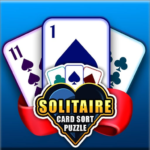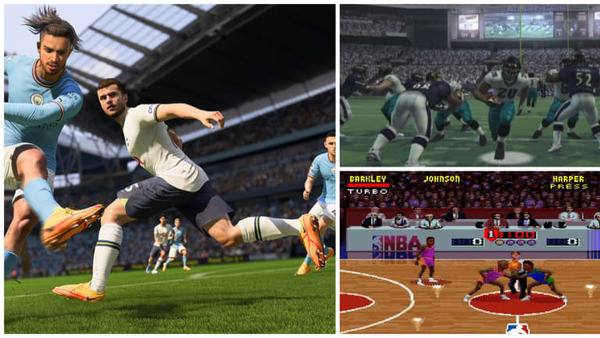League of Legends, developed and published by Riot Games, is a free-to-play multiplayer online battle arena (MOBA) game that has become a global phenomenon since its release in 2009. With millions of active players, a rich lore, strategic depth, and a thriving esports scene, League of Legends—or LoL—has earned its place as one of the most influential games in history. This article delves into the mechanics, gameplay, community, and legacy that define League of Legends.
The Origins and Development of League of Legends
League of Legends was inspired by a custom map from Warcraft III called Defense of the Ancients (DotA). Riot Games aimed to create a standalone game that combined accessibility with strategic complexity. Upon release, LoL featured 40 champions and a single map, Summoner’s Rift.
Over time, Riot expanded the champion roster, improved the game engine, and introduced new modes, events, and lore. Today, LoL boasts over 160 champions, multiple maps, and a vast world called Runeterra, home to diverse factions and characters.
Core Gameplay Mechanics of League of Legends
At its heart, League of Legends is a 5v5 MOBA where two teams compete to destroy each other's Nexus, the core building in their base. Each player selects a unique champion with distinct abilities, roles, and stats.
The map, Summoner’s Rift, features three lanes—top, mid, and bottom—along with a jungle filled with neutral monsters. Players earn gold and experience by killing minions, jungle camps, and enemy champions, then use resources to purchase items and grow stronger. Objectives like towers, dragons, and Baron Nashor are key to victory.
Understanding Roles and Positions in League of Legends
Each team in League of Legends consists of five roles:
- Top Lane: Usually tanky or bruiser champions who duel 1v1.
- Jungle: Roams the map, secures objectives, and assists lanes.
- Mid Lane: Often burst-damage mages or assassins who control the center.
- Bot Lane (ADC): Ranged damage dealers who scale into late-game.
- Support: Protects the ADC and provides vision and utility.
Mastering each role’s duties is crucial for team synergy and success in both solo and ranked play.
Champion Diversity and Customization
League of Legends champions come from various regions and species, offering a wide variety of playstyles. From aggressive assassins like Zed to control mages like Lux or support healers like Soraka, there's a champion for every player.
Customization is achieved through runes and summoner spells. Runes provide passive bonuses, while summoner spells offer active tools like Flash and Ignite. Additionally, skins allow players to alter champion appearances and effects for personalization.
Game Modes Beyond Summoner’s Rift in League of Legends
While Summoner’s Rift is the core experience, League of Legends offers other modes:
- ARAM (All Random All Mid): A single-lane map with randomized champions.
- Teamfight Tactics (TFT): A strategic auto-battler spinoff.
- Rotating Game Modes: Includes Nexus Blitz, URF (Ultra Rapid Fire), and One for All.
These modes cater to casual play, experimentation, and refreshing gameplay for long-time players.
Strategic Depth and Meta
LoL’s meta (most effective tactics available) constantly evolves due to patches and champion balance. Strategies include:
- Split pushing: Forcing pressure in multiple lanes.
- Team fighting: Coordinated battles with ability synergy.
- Objective control: Prioritizing dragons, Rift Heralds, and turrets.
The depth of LoL comes from champion matchups, vision control, wave management, and macro decision-making, all of which distinguish average players from pros.
League of Legends Ranked System and Competitive Play
The ranked ladder divides players into tiers: Iron, Bronze, Silver, Gold, Platinum, Diamond, Master, Grandmaster, and Challenger. Climbing requires consistent performance, teamwork, and adaptability.
Ranked Flex and Solo/Duo queues offer different experiences—Flex encourages group coordination while Solo/Duo tests individual skill. Each season resets rankings and offers rewards like skins and emotes.
Tips and Tricks for Improving in League of Legends
To improve in LoL, focus on fundamentals:
- Map awareness: Frequently check the minimap for enemy movements.
- CSing (Creep Score): Practice last-hitting minions for gold.
- Warding: Place and clear vision to control objectives.
- Champion mastery: Specialize in a few champions per role.
- Review gameplay: Watch replays to identify mistakes and refine decisions.
Joining communities, watching streamers, and reading patch notes also help stay informed and inspired.
The Global Esports Impact of League of Legends
League of Legends revolutionized esports with the annual World Championship, regional leagues like LCS (North America), LEC (Europe), LCK (Korea), and LPL (China), and multi-million dollar prize pools.
Teams like T1, G2 Esports, and EDward Gaming have become household names. Riot’s investment in production, storytelling, and competition raised esports to new heights, making LoL a cultural and global sensation.
Conclusion:
League of Legends continues to dominate the gaming world through innovation, community engagement, and competitive excellence. Whether you’re drawn to its strategic depth, vibrant characters, or the thrill of competition, LoL offers a unique experience that evolves with every patch and season. With a low barrier to entry and near-infinite depth, it stands as both a game and a global phenomenon that invites players to master the rift, one match at a time.































